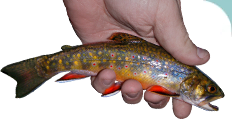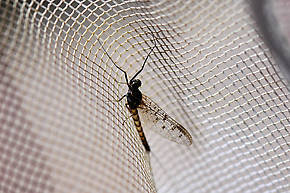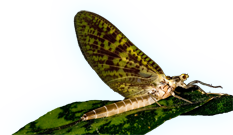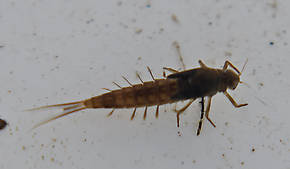Blog & Latest Updates
Fly Fishing Articles
Insects by Common Name


Mayfly Genus Ameletus (Brown Duns)
Taxonomic Navigation -?-
Kingdom
Animalia (Animals)
» Phylum
Arthropoda (Arthropods)
» Class
Insecta (Insects)
» Order
Ephemeroptera (Mayflies)
» Family
Ameletidae (Brown Duns)
» Genus Ameletus (Brown Duns)
25 species aren't included.
Common Name
| Match | Common Name |
| Brown Duns |
Where & When
Preferred Waters: Streams of all sizes
Altitude: Up to 11,000 feet
There are many Ameletus species in the United states, but only two are regarded as significant: Ameletus velox in the West and Ameletus ludens in the East. Neither one constitutes a widespread superhatch, but they can be very abundant locally.Altitude: Up to 11,000 feet
Hatching Behavior
These mayflies emerge sporadically by crawling out of the water as nymphs.
Nymph Biology
Ameletus nymphs are very fast swimmers. They are occasionally mistaken (especially in early instars (Instar: Many invertebrates molt through dozens of progressively larger and better-developed stages as they grow. Each of these stages is known as an instar. Hard-bodied nymphs typically molt through more instars than soft-bodied larvae.)) for some species in the Baetidae family, having roughly similar body shape and coloration. They are easily separated under close inspection based on gill coloration and prominent mouth parts. As mature nymphs their large size and intense maculation (the scientific common name for this family in some circles is Painted Minnow nymph) make them much easier to differentiate from others.
Pictures of 21 Mayfly Specimens in the Genus Ameletus:
Ameletus ludens (Brown Dun) Mayfly Nymph View 9 Pictures
View 9 Pictures
 View 9 Pictures
View 9 PicturesCollected March 29, 2005 from Salmon Creek in New York
Added to Troutnut.com by Troutnut on April 7, 2006
Added to Troutnut.com by Troutnut on April 7, 2006
Male Ameletus oregonensis (Brown Dun) Mayfly Spinner View 3 Pictures
View 3 Pictures
 View 3 Pictures
View 3 PicturesCollected May 12, 2005 from Hungry Horse Creek in Montana
Added to Troutnut.com by Bnewell on June 28, 2011
Added to Troutnut.com by Bnewell on June 28, 2011
Recent Discussions of Ameletus
Brown Dun hatch/swarm time? 10 Replies »
Posted by Konchu on Apr 25, 2009 in the species Ameletus ludens
Last reply on Apr 30, 2009 by Troutnut
Has anyone else watched a Brown Dun hatch or swarm? If so, what time of day did you see it, and how long did it last?
I came upon a woodland swarm late this evening. I thought I saw mating occurring higher above the stream. This would mean that parthenogenesis is not necessarily happening in "my" stream. I watched for awhile, but got distracted (venomous snake). I hope to catch it (the hatch, not the snake) again tomorrow night and note the egg-laying behavior and possibly nab some male adults for science. There's a range of nymph ages, so I should be OK, weather permitting.
ReplyI came upon a woodland swarm late this evening. I thought I saw mating occurring higher above the stream. This would mean that parthenogenesis is not necessarily happening in "my" stream. I watched for awhile, but got distracted (venomous snake). I hope to catch it (the hatch, not the snake) again tomorrow night and note the egg-laying behavior and possibly nab some male adults for science. There's a range of nymph ages, so I should be OK, weather permitting.
There is 1 more topic.
Your Thoughts On Ameletus:
Top 10 Fly Hatches
Top Gift Shop Designs
Eat mayflies.
Top Insect Specimens
Miscellaneous Sites
Troutnut.com is copyright © 2004-2024 Jason
Neuswanger (email Jason). See my FAQ for information about use of my images.
 privacy policy
privacy policy

